This easy aloo pakora recipe is for spicy and crispy fritters made with chickpea flour batter stuffed with potatoes, onions, green chilis and herbs. Every South Asian family has its own secret recipe for these savory treats. But while the recipes and fillings vary from household to household, the universal love for this delightful snack is a constant.
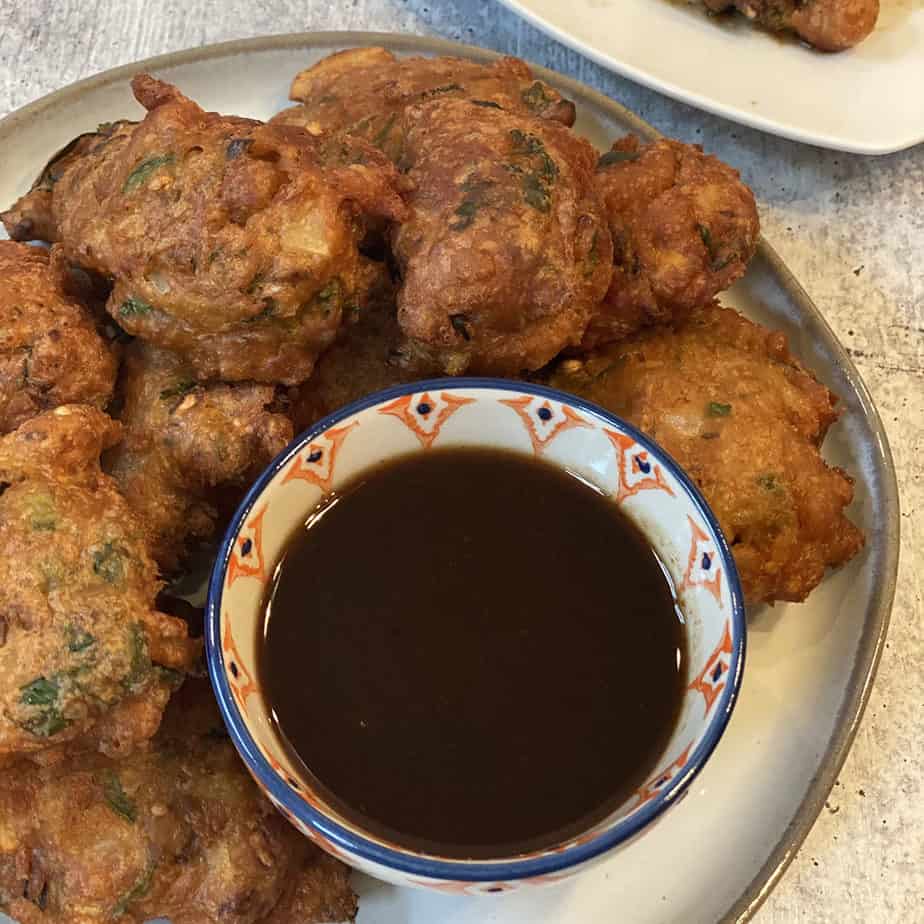
The History
The origins of this fritter can be traced back in time to the 16th century in the city of Gujrat in India. Today there are numerous variations of the fritter. The spongy breadlike variety is favored for breakfast and the crispier version is usually a tea time treat, often purchased from street vendors.
Crispy vegetable pakoras are the most popular type in India and the "Beguni" (eggplant fritter) is a Bangladeshi specialty. Pakora curry, made with plain pakoras dipped in a yogurt curry has its roots in the Punjab region while In Pakistan, the chicken pakora is increasingly popular. Try my chicken-pakora-kebab if you haven't already for a version of this.
Fun Fact!
It is believed that Portuguese and Spanish traders stopped in India on their way to Japan and took the pakora recipe with them. The Japanese in turn, changed the recipe to create what we know today as Tempura!
My Story
Pakoras are a quick and easy snack to prepare and one of my childhood favorites! Of course I can eat them anywhere and anytime but with Ramadan approaching I'm thinking of them more and more. It's a popular way to open a fast and in many households it's on the table for Iftari every single day!
SImilarly, during the Monsoon season, pakoras are a popular snack to celebrate the coming of rain. Maybe that's why I love rain so much! The positive association of pakoras and tea is reason enough!
My kids love pakoras just as much as I do and are always ready to indulge! The great thing is that they're very easy to make. If it wasn't for the calories I'd be making them more and more often.
The Recipe
Measure all of the dry ingredients and spices in a mixing bowl.

Chop all of the vegetables as pictured below. Make sure the potatoes are finely diced or else they won't cook through.

Add the water first and make sure the batter has no lumps, followed by the vegetables. This is the point at which you can add your yogurt or cornstarch if you wish. The benefits of adding each one are explained below:
Yogurt
Adding a fermented dairy product to the batter helps in two ways per fermentingforfoodies.com . First of all it hydrates the chickpea flour and second of all it helps to break down the complex carbs. This helps make the pakoras spongy, soft and easy to digest. In addition, the yogurt adds a rich sour dough like taste, making the pakoras more flavorful.
Cornstarch
Now if you like crispy pakoras then the yogurt may not be the right thing to add. Cornstarch or rice flour can help make the end product crispier. Similarly, making the batter with very cold water also helps make the pakoras crispy. As the oil works to help evaporate the water, there is less absorbed by the fritters and they are crispy as a result .
For this recipe I used yogurt but when I'm dipping large pieces of vegetable such as spinach or eggplant, I prefer the crispier version. Try it both ways and you'll soon know which one you prefer!

SInce baking soda is added to the batter they will puff up a little bit when you fry them. I use the ice cream scoop pictured below to make mine, filling it only half full. Drop the batter in gently as the oil will be very hot.

The oil should be very hot, 375 degrees if you want to use a thermometer. I use my mothers tried and tested method instead. Just drop a small drop of the batter into the oil and if it rises right to the top of the oil immediately, you're ready to fry your pakoras. Conversely, If it settles to the bottom then you need to wait a bit longer for the oil to heat up.

It's best to fry only a few pakoras at a time. even if your cooking utensil allows for more, putting too many in at once will drop the temperature of the oil. If the oil is not hot enough the batter won't crisp up properly and the fritters will be soggy.

As you start frying the fritters, you may need to flip them to cook more evenly. If they seem to be browning too fast, reduce your stove's temperature from high to medium. This will insure that the center and the vegetables cook through.

I like my pakoras with a tamarind-dipping-sauce, but ketchup is a great stand in for when you don't have any chutney on hand.
Aloo Pakora Recipe
Ingredients
- 1 cup chickpea flour (besan)
- 1 tsp salt
- 2 tsp red chili powder
- 1 tsp cumin seeds (zeera)
- 1 tsp coriander seeds (dhania)
- 1 tsp dried fenugreek leaves (methi) OPTIONAL
- 1 tsp carom seeds (ajwain) OPTIONAL
- 1 tbsp pomegranate seeds (anar dana)
- ¼ tsp baking soda
- 2 tbsp cornflour (OPTIONAL-SEE NOTES)
- 2 green chillies (SEE NOTES)
- ½ onion
- 2 tbsp cilantro
- 1 baby potato
- 10 curry leaves OPTIONAL
- ⅔ cup water (SEE NOTES)
- 2 tbsp yogurt (OPTIONAL-SEE NOTES)
- 2 cups oil
Instructions
- Mix all of the dry ingredients and spices (and the cornflour if using) in a bowl
- Finely dice the onion, chili's, cilantro, potatoes and curry leaves (SEE NOTES)
- Add the water (and yogurt if using) to the dry mix and stir well till there are no longer any lumps
- Add all of the chopped fresh ingredients
- Set the batter aside for 20 minutes
- Heat the 2 cups of oil to 375° F ((190° C)
- Add approximately 1 heaping tablespoon of batter at a time and fry till the fritters are a deep brown (SEE NOTES)



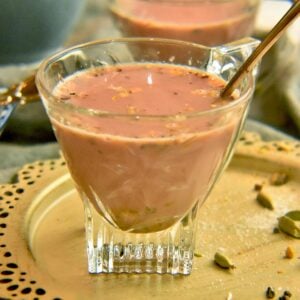
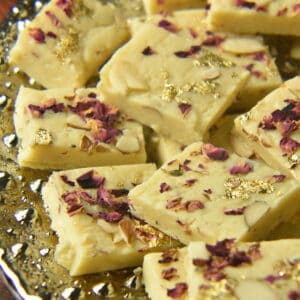
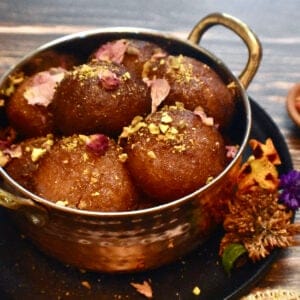
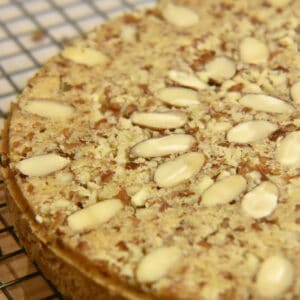
Sajid
Yummy pakoras!!
Made these for the second time in a week and I love them! So incredibly simple for such a hearty snack! I will be making these during Ramadan and beyond!
untoldrecipesbynosheen
Thank You Sajid. I'm glad you like them and that your Ramadan is more enjoyable because of them.